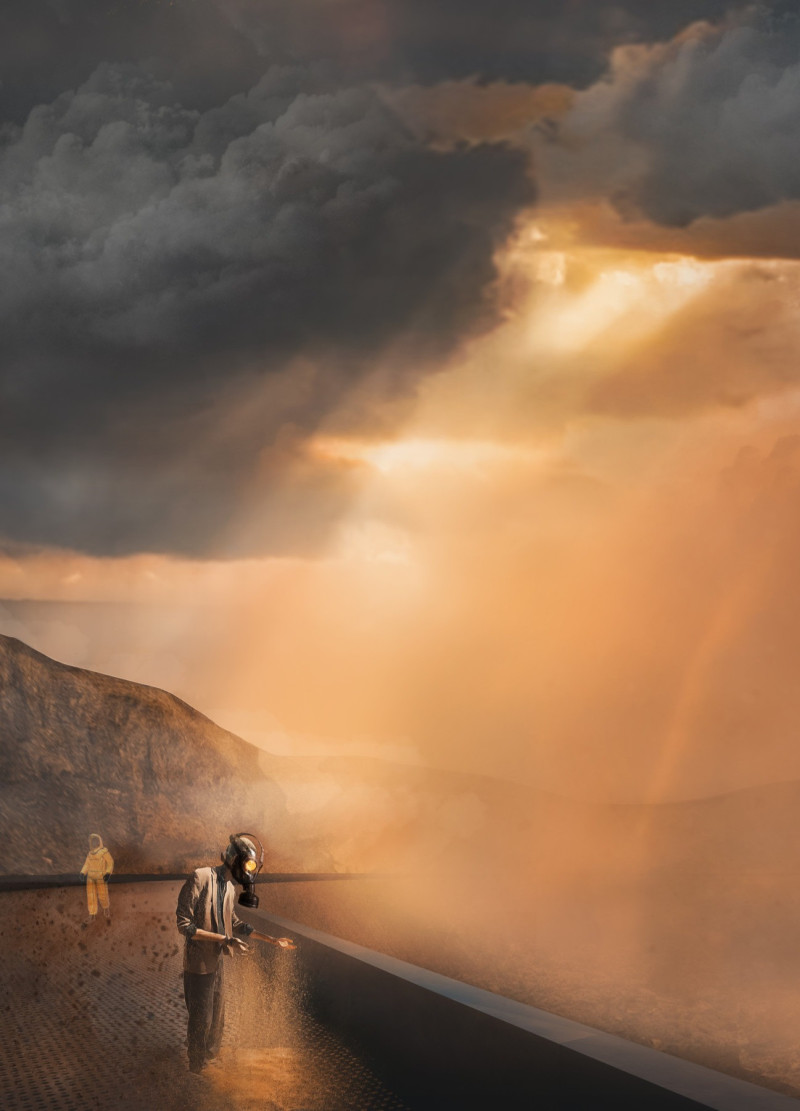5 key facts about this project
At its core, the project serves a multifaceted purpose, catering to both individual needs and community requirements. It fosters an inclusive atmosphere while prioritizing user experience through its thoughtful spatial configuration. Entering the structure, one is met with an expansive foyer that welcomes visitors with an abundance of natural light, illuminating a space that serves as a central hub for both circulation and social interaction. This design choice not only enhances the aesthetic appeal but also promotes a sense of connectivity among its users.
The materials chosen for this project are integral to its overall expression. Predominantly featuring locally-sourced stone, timber, and glass, each material was selected not only for its functional attributes but also for its environmental compatibility. The use of durable materials ensures longevity while minimizing maintenance requirements, further supporting sustainable practices. Additionally, the integration of glass elements allows for expansive views of the surrounding landscape, effectively blurring the lines between indoor and outdoor spaces, and creating an atmosphere that fosters connection to nature.
A particularly notable aspect of the design is the incorporation of green technologies and sustainable practices. Solar panels are strategically placed to harness the sun's energy, providing an efficient source of power for the building's operations. Water conservation methods are evident through the installation of rainwater collection systems, which further underline the project’s commitment to eco-friendly design principles. Moreover, the landscapes surrounding the architecture are designed with native plantings, promoting biodiversity while requiring minimal irrigation.
In terms of spatial organization, the project features a fluid layout that encourages movement and exploration. Open-plan areas are complemented by more intimate spaces, allowing for versatility in use and fostering a dynamic environment where varied activities can take place. Elements such as sliding partitions enable users to adapt spaces to suit their needs, enhancing the project’s functionality while promoting collaborative interactions among occupants.
The design also pays homage to local culture and history, reflecting architectural ideas that resonate with the community's character. Through the careful selection of design elements and motifs, the project draws inspiration from traditional styles while simultaneously embracing a contemporary approach. This synthesis of old and new promotes a sense of continuity and respect for the locale, enhancing the project's identity while appealing to a broader audience.
Lighting plays a vital role in enhancing the architectural experience within the project. Both natural and artificial lighting are used thoughtfully to create inviting atmospheres throughout the day. During daylight hours, large windows allow for an abundance of sunlight, while strategically placed artificial lighting fixtures contribute to safety and ambiance in the evenings. This attention to lighting design complements the overall architectural aesthetic and supports the creation of comfortable and inviting spaces.
As an architectural project, it embodies a unique blend of form and function, balancing aesthetic appeal with practical application. The thoughtful integration of materials, innovative design techniques, and a commitment to sustainability elevates the project beyond mere structure, transforming it into a significant contribution to the community. Exploring architectural plans, sections, and designs will provide an even deeper understanding of the intentional decisions that shaped this project. For those interested in the nuances of modern architecture, delving into these elements will reveal the layers of creativity and strategic thinking that underpin this design endeavor. Engaging with this project not only offers insights into its architectural merit but also inspires future discussions around sustainable and community-focused building practices.























